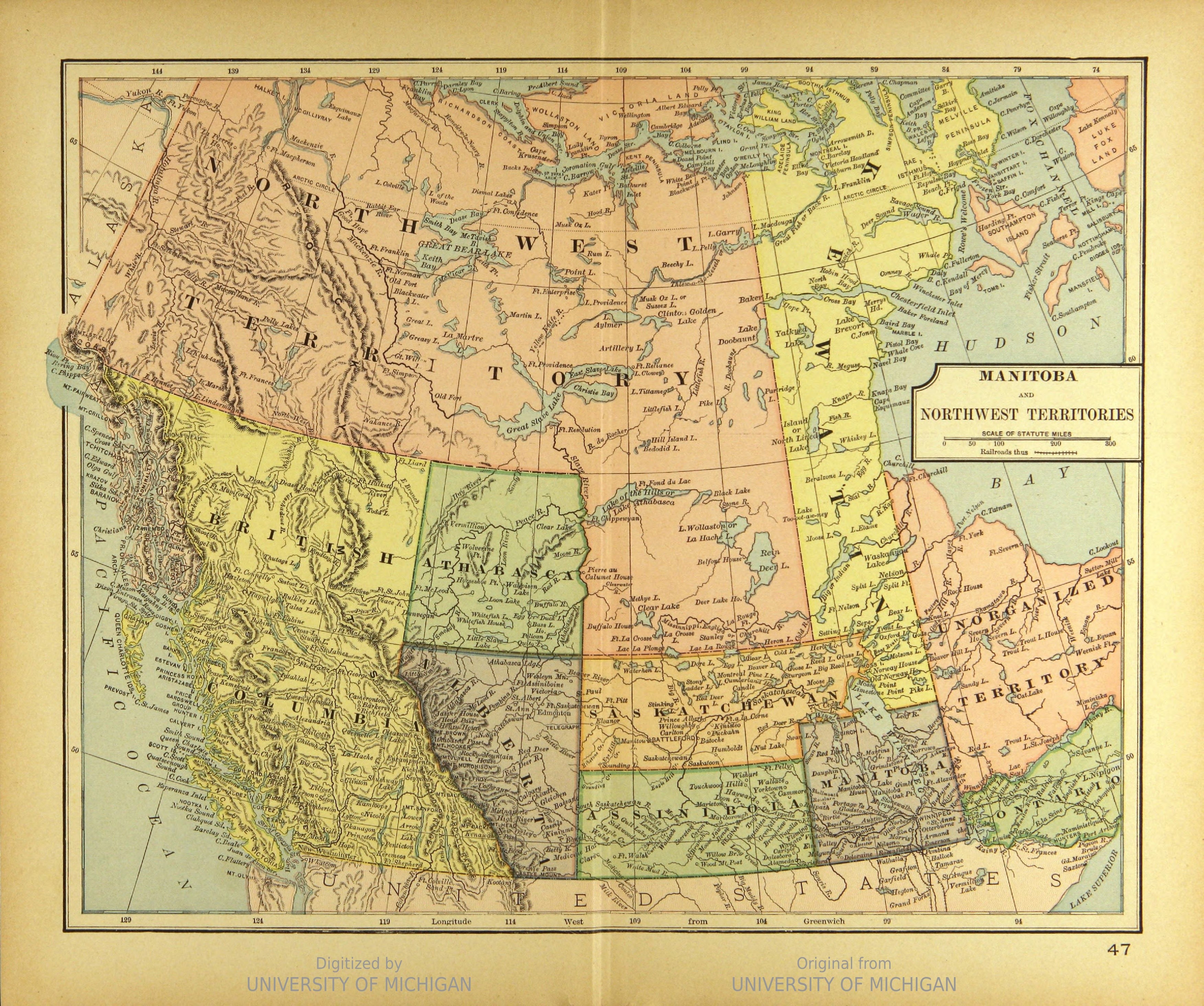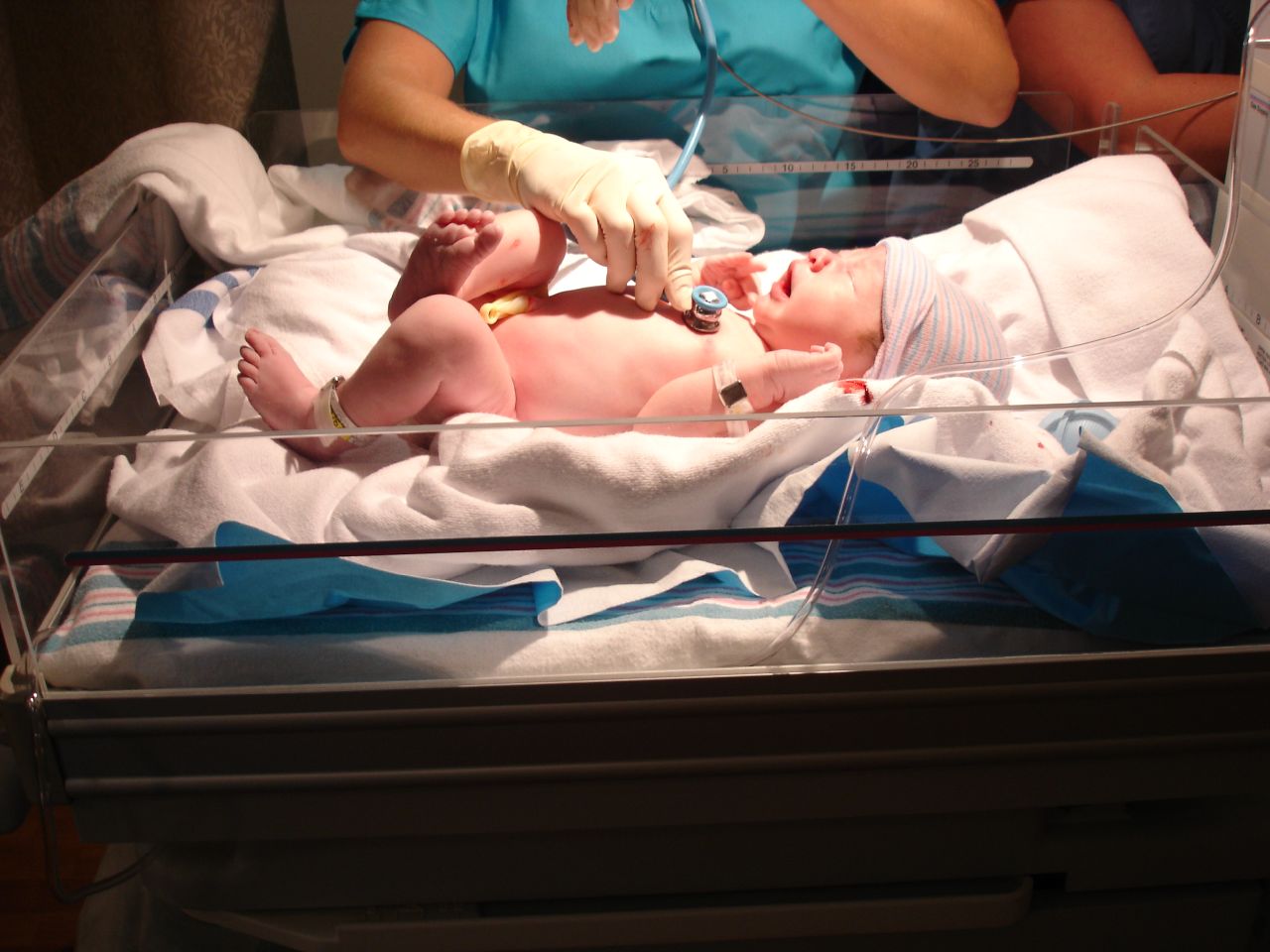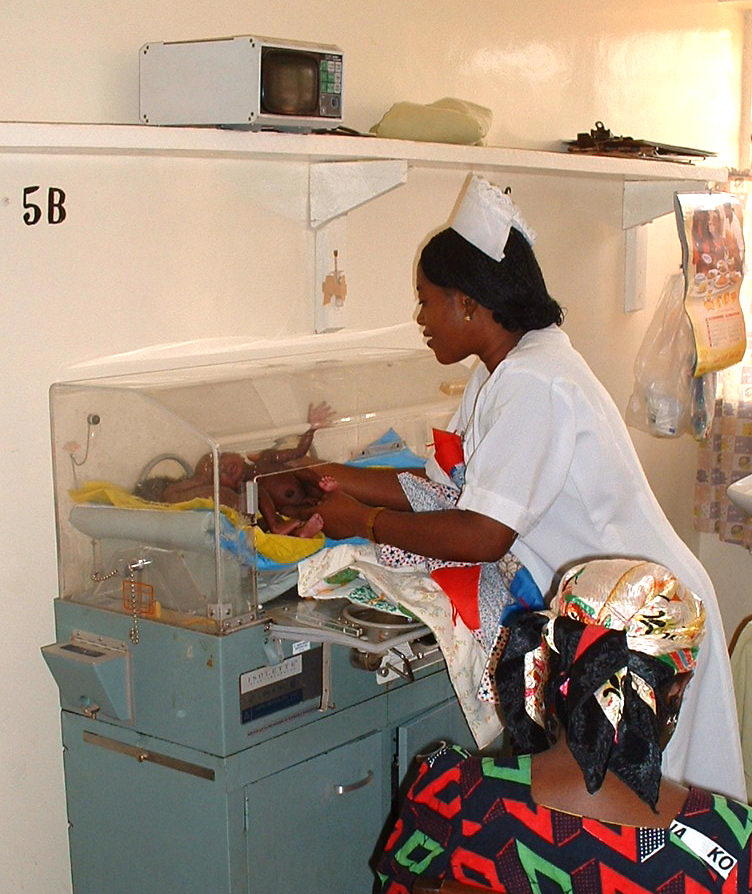|
Stollery Children's Hospital
The Stollery Children's Hospital is a 218 bed children's hospital that opened in October 2001. It is a "hospital within a hospital," being situated within the University of Alberta Hospital and co-located with Mazankowski Alberta Heart Institute in the Walter C. Mackenzie Health Sciences Centre in Edmonton, Alberta, Canada. The hospital, which was run by Capital Health (Alberta), Capital Health before being merged in 2008 into Alberta Health Services, is named for Bob and Shirley Stollery, who provided the original donation which helped with the creation of the hospital. History The Northern Alberta Children's Hospital Foundation was created in 1978 with the intention of having a specific children's hospital built in Edmonton. The foundation was a backer of the Child Health program and in 1992, the name was changed to Children's Health Foundation of Northern Alberta to better show their support. Later, after the hospital opened, the name was changed to the current "Stollery Child ... [...More Info...] [...Related Items...] OR: [Wikipedia] [Google] [Baidu] |
Alberta Health Services
Alberta Health Services (AHS) is the single Health regions of Canada, health authority for the Provinces and territories of Canada, Canadian province of Alberta and the "largest integrated provincial health care system" in Canada. Headquartered in Edmonton, AHS delivers medical care on behalf of the Government of Alberta, Government of Alberta's Ministry of Health (Alberta), Ministry of Health. It operates 850 facilities throughout the province, including hospitals, clinics, continuing care facilities, mental health facilities and community health sites, that provide a variety of programs and services. AHS is the largest employer in the province of Alberta. In 2019, AHS served 4.3 million Albertans with a staff of 125,000 staff and 10,000 physicians, and an annual budget of $15.365 billion. Deputy Minister of Health Andre Tremblay is the interim President and CEO as well as Official Administrator. The Official Administrator is accountable to the Minister of Health and the Premier. ... [...More Info...] [...Related Items...] OR: [Wikipedia] [Google] [Baidu] |
Western Canada
Western Canada, also referred to as the Western provinces, Canadian West, or Western provinces of Canada, and commonly known within Canada as the West, is a list of regions of Canada, Canadian region that includes the four western provinces and territories of Canada, provinces just north of the Canada–United States border namely (from west to east) British Columbia, Alberta, Saskatchewan and Manitoba. The people of the region are often referred to as "Western Canadians" or "Westerners", and though diverse from province to province are largely seen as being collectively distinct from other Canadians along cultural, linguistic, socioeconomic, geographic and political lines. They account for approximately 32% of Canada's total population. The region is further subdivided geographically and culturally between British Columbia, which is mostly on the western side of the Canadian Rockies and often referred to as the "British Columbia Coast, west coast", and the "Prairie Provinces" (c ... [...More Info...] [...Related Items...] OR: [Wikipedia] [Google] [Baidu] |
Stollery Children's Hospital Walkway
{{surname, Stollery ...
Stollery is a surname. Notable people with the surname include: * Christopher Stollery (born 1965), Australian television actor * David Stollery (born 1941), former American child actor and, as an adult, an industrial designer * Karl Stollery (born 1987), Canadian ice hockey player * Pete Stollery (born 1960), British composer, specialising in electroacoustic music * Peter Stollery (born 1935), Canadian politician and businessman * John Stollery (born 1930), British engineer and academic See also * Stollery Children's Hospital The Stollery Children's Hospital is a 218 bed children's hospital that opened in October 2001. It is a "hospital within a hospital," being situated within the University of Alberta Hospital and co-located with Mazankowski Alberta Heart Institute ... [...More Info...] [...Related Items...] OR: [Wikipedia] [Google] [Baidu] |
Neonatology
Neonatology is a subspecialty of pediatrics that consists of the medical care of newborn infants, especially the ill or premature newborn. It is a hospital-based specialty and is usually practised in neonatal intensive care units (NICUs). The principal patients of neonatologists are newborn infants who are ill or require special medical care due to prematurity, low birth weight, intrauterine growth restriction, congenital malformations ( birth defects), sepsis, pulmonary hypoplasia, or birth asphyxia. Historical developments Though high infant mortality rates were recognized by the medical community at least as early as the 1860s, advances in modern neonatal intensive care have led to a significant decline in infant mortality in the modern era. This has been achieved through a combination of technological advances, enhanced understanding of newborn physiology, improved sanitation practices, and development of specialized units for neonatal intensive care. Around the mid ... [...More Info...] [...Related Items...] OR: [Wikipedia] [Google] [Baidu] |
Canadian Neonatal Network
The Canadian Neonatal Network (CNN) is an organization composed of neonatologists and neonatal health professionals from across Canada. The network was created in 1995 by Dr. Shoo Kim Lee, and currently its steering committee is composed of Drs. Keith Barrington, Aaron Chiu, Kim Dow, Jonathan Hellmann, Bruno Piedboeuf, Molly Seshia, Prakesh Shah (who also serves as the Associate Director of the Network) and Wendy Yee. Sandy Maksimowska currently holds the position of CNN Project Coordinator. Recognition The CNN was recognized in 2004 by the Canadian Institutes of Health Research (CIHR) with their "CIHR Knowledge Translation Award". In the award citation, the CIHR described the CNN as "the archetype of the knowledge translation network in Canada." Membership Canadian hospitals with tertiary NICUs can become institutional members, and individuals with research background in neonatology Neonatology is a subspecialty of pediatrics that consists of the medical care of newborn ... [...More Info...] [...Related Items...] OR: [Wikipedia] [Google] [Baidu] |
Nunavut
Nunavut is the largest and northernmost Provinces and territories of Canada#Territories, territory of Canada. It was separated officially from the Northwest Territories on April 1, 1999, via the ''Nunavut Act'' and the Nunavut Land Claims Agreement, ''Nunavut Land Claims Agreement Act'', which provided this territory to the Inuit for self-government. The boundaries had been drawn in 1993. The creation of Nunavut resulted in the territorial evolution of Canada, first major change to Canada's political map in half a century since the province of Newfoundland and Labrador, Newfoundland (now Newfoundland and Labrador) was admitted in 1949. Nunavut comprises a major portion of Northern Canada and most of the Arctic Archipelago. Its vast territory makes it the list of the largest country subdivisions by area, fifth-largest country subdivision in the world, as well as North America's second-largest (after Greenland). The capital Iqaluit (formerly "Frobisher Bay"), on Baffin Island in ... [...More Info...] [...Related Items...] OR: [Wikipedia] [Google] [Baidu] |
Northwest Territories
The Northwest Territories is a federal Provinces and territories of Canada, territory of Canada. At a land area of approximately and a 2021 census population of 41,070, it is the second-largest and the most populous of Provinces and territories of Canada#Territories, the three territories in Northern Canada. Its estimated population as of the first quarter of 2025 is 45,074. Yellowknife is the capital, most populous community, and the only city in the territory; its population was 20,340 as of the 2021 census. It became the territorial capital in 1967, following recommendations by the Carrothers Commission. The Northwest Territories, a portion of the old North-Western Territory, entered the Canadian Confederation on July 15, 1870. At first, it was named the North-West Territories. The name was changed to the present Northwest Territories in 1906. Since 1870, the territory has been divided four times to create new provinces and territories or enlarge existing ones. Its current ... [...More Info...] [...Related Items...] OR: [Wikipedia] [Google] [Baidu] |
British Columbia
British Columbia is the westernmost Provinces and territories of Canada, province of Canada. Situated in the Pacific Northwest between the Pacific Ocean and the Rocky Mountains, the province has a diverse geography, with rugged landscapes that include rocky coastlines, sandy beaches, forests, lakes, mountains, inland deserts and grassy plains. British Columbia borders the province of Alberta to the east; the territories of Yukon and Northwest Territories to the north; the U.S. states of Washington (state), Washington, Idaho and Montana to the south, and Alaska to the northwest. With an estimated population of over 5.7million as of 2025, it is Canada's Population of Canada by province and territory, third-most populous province. The capital of British Columbia is Victoria, British Columbia, Victoria, while the province's largest city is Vancouver. Vancouver and its suburbs together make up List of census metropolitan areas and agglomerations in Canada, the third-largest metropolit ... [...More Info...] [...Related Items...] OR: [Wikipedia] [Google] [Baidu] |
Neonatal Intensive Care Unit
A neonatal intensive care unit (NICU), also known as an intensive care nursery (ICN), is an intensive care unit (ICU) specializing in the care of ill or premature newborn infants. The NICU is divided into several areas, including a critical care area for babies who require close monitoring and intervention, an intermediate care area for infants who are stable but still require specialized care, and a step down unit where babies who are ready to leave the hospital can receive additional care before being discharged. Neonatal refers to the first 28 days of life. Neonatal care, as known as specialized nurseries or intensive care, has been around since the 1960s. The first American newborn intensive care unit, designed by Louis Gluck, was opened in October 1960 at Yale New Haven Hospital. An NICU is typically directed by one or more neonatologists and staffed by resident physicians, nurses, nurse practitioners, pharmacists, physician assistants, respiratory therapists, and ... [...More Info...] [...Related Items...] OR: [Wikipedia] [Google] [Baidu] |
Biomedical Engineering
Biomedical engineering (BME) or medical engineering is the application of engineering principles and design concepts to medicine and biology for healthcare applications (e.g., diagnostic or therapeutic purposes). BME also integrates the logical sciences to advance health care treatment, including Medical diagnosis, diagnosis, Medical monitor, monitoring, and therapy. Also included under the scope of a biomedical engineer is the management of current medical equipment in hospitals while adhering to relevant industry standards. This involves procurement, routine testing, preventive maintenance, and making equipment recommendations, a role also known as a Biomedical Equipment Technician (BMET) or as a clinical engineer. Biomedical engineering has recently emerged as its own field of study, as compared to many other engineering fields. Such an evolution is common as a new field transitions from being an Interdisciplinarity, interdisciplinary specialization among already-established ... [...More Info...] [...Related Items...] OR: [Wikipedia] [Google] [Baidu] |
Thrombosis
Thrombosis () is the formation of a Thrombus, blood clot inside a blood vessel, obstructing the flow of blood through the circulatory system. When a blood vessel (a vein or an artery) is injured, the body uses platelets (thrombocytes) and fibrin to form a blood clot to prevent blood loss. Even when a blood vessel is not injured, blood clots may form in the body under certain conditions. A clot, or a piece of the clot, that breaks free and begins to travel around the body is known as an embolus. Thrombosis can cause serious conditions such as stroke and heart attack. Thrombosis may occur in veins (venous thrombosis) or in arteries (arterial thrombosis). Venous thrombosis (sometimes called DVT, deep vein thrombosis) leads to a blood clot in the affected part of the body, while arterial thrombosis (and, rarely, severe venous thrombosis) affects the blood supply and leads to damage of the tissue supplied by that artery (ischemia and necrosis). A piece of either an arterial or a v ... [...More Info...] [...Related Items...] OR: [Wikipedia] [Google] [Baidu] |
Extracorporeal Membrane Oxygenation
Extracorporeal membrane oxygenation (ECMO) is a form of extracorporeal life support, providing prolonged cardiac and respiratory system, respiratory support to people whose human heart, heart and human lung, lungs are unable to provide an adequate amount of oxygen, gas exchange or blood supply (perfusion) to sustain life. The technology for ECMO is largely derived from cardiopulmonary bypass, which provides shorter-term support with arrested native circulation. The device used is a membrane oxygenator, also known as an artificial lung. ECMO works by temporarily drawing blood from the body to allow artificial oxygenation of the red blood cells and removal of carbon dioxide. Generally, it is used either post-cardiopulmonary bypass or in late-stage treatment of a person with profound heart and/or lung failure, although it is now seeing use as a treatment for cardiac arrest in certain centers, allowing treatment of the underlying cause of arrest while circulation and oxygenation are ... [...More Info...] [...Related Items...] OR: [Wikipedia] [Google] [Baidu] |








